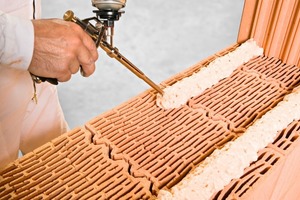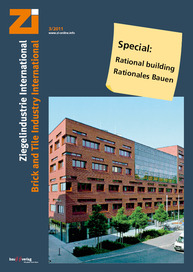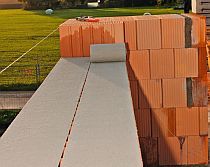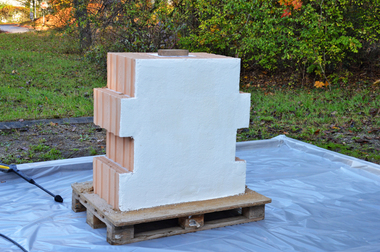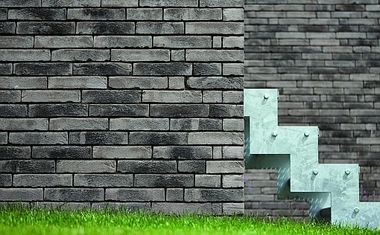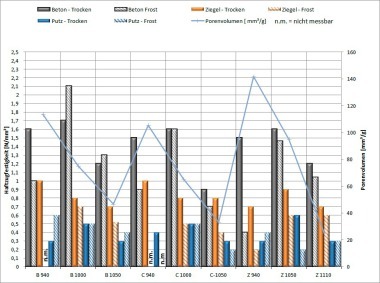The requirements for planning and building houses have developed strongly in recent years. Besides structural-physical qualities, a faster, less complicated and therefore more cost-efficient use is playing an increasingly important role. Optimally, all this should be guaranteed at every time of the year and consequently different temperatures, down to -5°C.
Wienerberger AG has therefore developed the Dryfix adhesive bonding system for masonry bricks. With a special foam adhesive, all types of walls can be constructed, especially walls made of Poroton high-precision blocks from Wienerberger. The Dryfix adhesive is applied to the surface-ground bricks instead of thin bed mortar and quickly forms a secure and durable bond.
Simple logistics and safe building
With an up to 50-% cut in the work time compared to conventional masonry, the Dryfix adhesive system guarantees very short construction times. Thanks to easy application with a glue gun, the cleaning of other tools is not necessary and the construction site stays clean. Simple logistics, fast and safe building guarantee cost-efficient execution. This system protected in building law with the generated approvals is available to the market for bearing and non-bearing walls.
The Dryfix adhesive system was developed around ten years ago, tested extensively and successfully introduced first in Austria and the Czech Republic. In the meantime, the innovative system is approved in a total of nine countries, including the Slovak Republic, Hungary, Poland, France, Italy, Slovenia and Croatia, and has proven ideal for professional bricklayers. Back in 2010, following the submission of extensive documentation, Wienerberger received the first approvals for bearing masonry in Germany from the Deutsches Institut für Bautechnik, Berlin.
Launch on the German market set for the second half of 2011
Dryfix is an internationally protected brand of Wienerberger AG for a high-quality masonry brick adhesive. Wienerberger holds the industrial property rights like the patents and utility model in many countries. As the application of the masonry brick adhesive is particularly useful and suitable for the use of all types of masonry bricks, licences have been granted and are being granted to other brick producers as well as adhesive producers for use with other masonry systems. Wienerberger GmbH, Hanover, will introduce the Dryfix bonding system for high-precision brick units in Germany in the second half of 2011.

